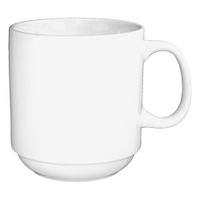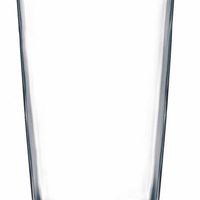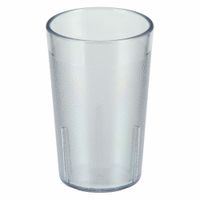Call +(254) 703 030 000 / 751 483 999 / 721 704 777
.....Read More
Frequently Asked Questions
What is the best material for coffee mugs?
The best material for coffee mugs depends on personal preferences and specific needs, but ceramic is often considered the top choice. Ceramic mugs are popular due to their excellent heat retention, which keeps coffee warm for longer periods. They are also non-reactive, ensuring that the coffee's flavor remains unaltered. Additionally, ceramic mugs are available in a wide range of designs and colors, making them aesthetically pleasing.
Glass is another good option, offering a modern and elegant look. It allows you to see the coffee inside, which can enhance the drinking experience. However, glass does not retain heat as well as ceramic and can be more fragile.
Stainless steel mugs are ideal for those who need durability and portability. They are often used in travel mugs due to their excellent insulation properties, keeping coffee hot for extended periods. Stainless steel is also lightweight and resistant to breakage, but it may impart a slight metallic taste to the coffee.
Porcelain mugs, a type of ceramic, are known for their high-quality finish and durability. They are often used in formal settings and can be more expensive than regular ceramic mugs.
Finally, stoneware is another ceramic variant that is thicker and heavier, providing excellent heat retention and a rustic appearance. It is durable and chip-resistant, making it a practical choice for everyday use.
In summary, ceramic is generally the best material for coffee mugs due to its heat retention, non-reactivity, and aesthetic versatility. However, the choice ultimately depends on individual preferences regarding durability, portability, and design.
How do you clean and maintain glassware?
To clean and maintain glassware, follow these steps:
1. **Pre-Rinse**: Rinse glassware with warm water immediately after use to prevent residue from drying.
2. **Soak**: Fill a basin with warm water and add a few drops of mild dish soap. Soak the glassware for a few minutes to loosen any stuck-on debris.
3. **Wash**: Use a soft sponge or cloth to gently scrub the glassware. Avoid abrasive pads that can scratch the surface. Pay special attention to rims and bases.
4. **Rinse**: Thoroughly rinse each piece with warm water to remove soap residue. For crystal or delicate glassware, use distilled water to prevent mineral spots.
5. **Dry**: Air-dry glassware on a clean dish rack or use a lint-free towel. For a streak-free finish, polish with a microfiber cloth.
6. **Remove Stains**: For stubborn stains or cloudiness, soak glassware in a mixture of equal parts vinegar and water, or use a paste of baking soda and water. Rinse thoroughly afterward.
7. **Dishwasher Use**: If using a dishwasher, ensure glassware is dishwasher-safe. Use a gentle cycle and space items to prevent contact. Avoid high heat settings.
8. **Storage**: Store glassware upright in a clean, dry cabinet. Avoid stacking to prevent chipping.
9. **Regular Maintenance**: Periodically check for chips or cracks. Discard damaged pieces to prevent injury.
10. **Special Care for Crystal**: Hand wash crystal glassware with mild soap and warm water. Avoid extreme temperature changes to prevent cracking.
By following these steps, you can ensure your glassware remains clean, clear, and in good condition for years to come.
What are the benefits of using travel cups for hot beverages?
Travel cups for hot beverages offer several benefits:
1. **Portability**: Travel cups are designed for on-the-go use, allowing you to enjoy your hot beverage anywhere, whether commuting, traveling, or at work.
2. **Temperature Retention**: Most travel cups are insulated, keeping beverages hot for extended periods. This ensures your drink remains at the desired temperature, enhancing your drinking experience.
3. **Spill Prevention**: With secure lids and often spill-proof designs, travel cups minimize the risk of spills and leaks, making them ideal for use in moving vehicles or crowded spaces.
4. **Environmental Impact**: Using a reusable travel cup reduces reliance on disposable cups, which are often not recyclable. This helps decrease waste and environmental footprint.
5. **Cost Savings**: Many coffee shops offer discounts for bringing your own cup, leading to savings over time. Additionally, it reduces the need to purchase disposable cups.
6. **Customization**: Travel cups come in various designs, sizes, and materials, allowing for personalization. This can reflect personal style and preferences.
7. **Durability**: Made from materials like stainless steel, plastic, or glass, travel cups are built to withstand daily use and are more durable than disposable options.
8. **Health Benefits**: Using your own cup ensures cleanliness and reduces exposure to potentially harmful chemicals found in some disposable cups, such as BPA.
9. **Convenience**: Travel cups often fit in car cup holders and are easy to carry, making them convenient for daily use.
10. **Versatility**: Besides hot beverages, travel cups can also be used for cold drinks, soups, or other liquids, making them a versatile addition to your daily routine.
How do you choose the right size tumbler for your needs?
To choose the right size tumbler, consider the following factors:
1. **Purpose**: Determine the primary use. For coffee, a 12-16 oz tumbler is typical. For water or smoothies, consider 20-30 oz.
2. **Portability**: If you need it for travel or commuting, a smaller, more compact tumbler (12-20 oz) is ideal for fitting in car cup holders and bags.
3. **Duration**: For long outings or workdays, a larger tumbler (24-30 oz) ensures you have enough beverage without frequent refills.
4. **Temperature Retention**: Larger tumblers often have better insulation, keeping drinks hot or cold longer. Consider this if temperature maintenance is crucial.
5. **Material**: Stainless steel tumblers are durable and often come in larger sizes. Plastic or glass options might be lighter but typically smaller.
6. **Lifestyle**: Active lifestyles may benefit from larger, durable tumblers with spill-proof lids. For desk use, a smaller, open-top design might suffice.
7. **Storage**: Ensure the tumbler fits in your storage spaces, like kitchen cabinets or car holders.
8. **Personal Consumption**: Reflect on your typical beverage intake. If you drink a lot, a larger tumbler reduces refill frequency.
9. **Design and Aesthetics**: Choose a size that complements your style and is comfortable to hold.
10. **Budget**: Larger tumblers may cost more. Balance size with your budget constraints.
By evaluating these factors, you can select a tumbler size that best fits your lifestyle and needs.
What are the advantages of using plastic drinkware?
Plastic drinkware offers several advantages:
1. **Durability**: Plastic drinkware is less prone to breaking or shattering compared to glass, making it ideal for outdoor events, picnics, and areas where safety is a concern, such as around pools.
2. **Lightweight**: Plastic is significantly lighter than glass or metal, making it easier to handle, transport, and store. This is particularly beneficial for children or elderly individuals who may struggle with heavier materials.
3. **Cost-Effective**: Generally, plastic drinkware is more affordable than glass or metal options. This makes it a practical choice for large gatherings or events where a high volume of drinkware is needed.
4. **Variety and Design**: Plastic drinkware comes in a wide range of colors, shapes, and designs, allowing for customization and personalization. This versatility makes it suitable for themed events or branding purposes.
5. **Insulation**: Some plastic drinkware is designed with insulating properties, helping to maintain the temperature of hot or cold beverages for longer periods.
6. **Reusability and Recycling**: Many plastic drinkware products are reusable and can be recycled, reducing environmental impact when disposed of properly. Some are even made from recycled materials, further enhancing their eco-friendliness.
7. **Safety**: Plastic drinkware eliminates the risk of injury from broken glass, making it a safer option for children and in environments where accidents are more likely.
8. **Convenience**: Plastic drinkware is often dishwasher safe, making it easy to clean and maintain. It is also available in disposable forms, offering convenience for events where washing up is impractical.
9. **Non-Reactive**: Unlike some metals, plastic does not react with acidic beverages, ensuring that the taste and quality of the drink remain unchanged.
These advantages make plastic drinkware a practical and versatile choice for various settings and occasions.
How can you prevent coffee mugs from staining?
1. **Rinse Immediately**: After using the mug, rinse it with water to prevent coffee from drying and staining.
2. **Use Baking Soda**: Sprinkle baking soda inside the mug, add a little water to form a paste, and scrub with a sponge to remove stains.
3. **Vinegar Soak**: Fill the mug with equal parts vinegar and water, let it soak for 10-15 minutes, then scrub and rinse.
4. **Salt and Ice**: Add salt and a few ice cubes to the mug, swirl them around to scrub away stains.
5. **Lemon Juice**: Rub the inside of the mug with a cut lemon or use lemon juice to help break down stains.
6. **Dishwasher**: Regularly wash mugs in a dishwasher if they are dishwasher-safe, as the high temperature and detergent can help prevent stains.
7. **Avoid Prolonged Contact**: Do not leave coffee sitting in the mug for extended periods.
8. **Use a Straw**: Drink coffee through a straw to minimize contact with the mug.
9. **Regular Cleaning**: Clean mugs regularly with a good dish soap to prevent buildup.
10. **Hydrogen Peroxide**: For tough stains, mix hydrogen peroxide with baking soda, apply to the stain, let it sit, then scrub and rinse.
11. **Avoid Metal Scrubbers**: Use non-abrasive sponges to prevent scratching the mug, which can make it more prone to staining.
12. **Choose Dark-Colored Mugs**: Opt for darker mugs that are less likely to show stains.
13. **Sealant**: Consider using a food-safe sealant to create a barrier against stains.
What is the difference between stemware and regular glassware?
Stemware refers to drinkware that has a stem, such as wine glasses, champagne flutes, and cocktail glasses. The stem allows the drinker to hold the glass without affecting the temperature of the beverage, which is particularly important for wines and other temperature-sensitive drinks. Stemware is often used in formal settings and is designed to enhance the drinking experience by allowing the aroma and flavor of the beverage to be fully appreciated.
Regular glassware, on the other hand, includes any glass without a stem, such as tumblers, highball glasses, and pint glasses. These are typically used for everyday beverages like water, juice, and mixed drinks. Regular glassware is more versatile and durable, making it suitable for casual settings and frequent use.
The primary differences between stemware and regular glassware lie in their design and intended use. Stemware is more specialized, focusing on the presentation and enjoyment of specific beverages, while regular glassware is more practical and adaptable for a wide range of drinks.


